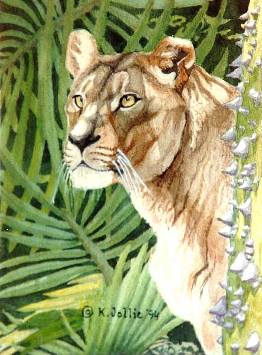
|
Some
people consider watercolor as a child's paint medium. It was handy, quick to set up, easy to use, but it had its drawbacks as well. I went on feeling that way about it until I finally took a Watercolor course in my 40's and discovered just how difficult, subtle, and challenging it could be as a color medium.
Those people who paint in oils or acrylics do not live in dread of mistakes -- one can just paint them over. This is because these media are opaque -- the new layer covers whatever is underneath. But watercolor is basically transparent, even in intense concentrations, so whatever is underneath a layer still shows through. Mistakes cannot be painted over. One either has to reconfigure the composition, or start over again on a fresh sheet. |
